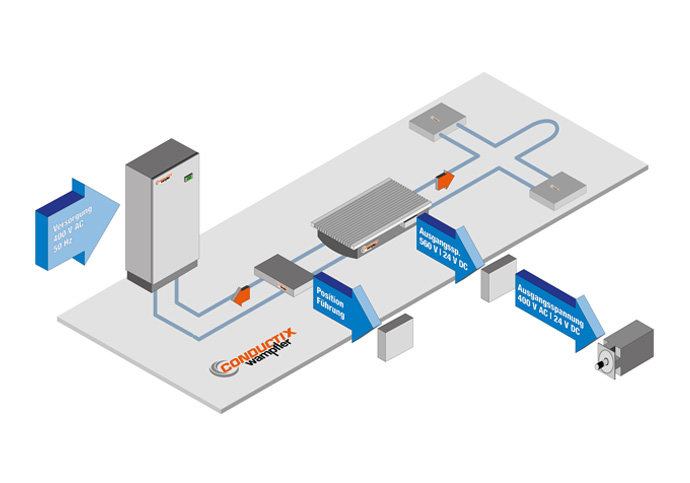Recommend
Remove File
Remove document <span id="remove-document-name"></span> from <span id="remove-cart-name"></span>?
Global economic expansion has greatly increased the demand for iron, steel, aluminum, and copper. Scrap handling facilities, steel plants, rolling mills, aluminum smelters, and electrowinning operations require rugged material handling machines that place high demands on energy and data transmission systems. Reliability is of paramount importance, as any unscheduled downtime will cause waste and lost productivity. Electric systems must withstand high heat, sparks, metal splatter and conductive dust. Aluminum pot line cranes need conductor systems that can handle high currents during the stationary operating cycle. In steel mills, mission-critical charging and ladle handling cranes must operate where furnaces and molten steel ambient heat often exceeds 70°C. To survive, cables need special heat shielding and conductor rails often require high-heat insulation. Bar, billet and coil handling cranes operate at high speeds and must position and turn loads accurately. Lastly, the environment around electrowinning and plating lines will corrode ordinary electrification components.
Conductix-Wampfler products are used in metals facilities all over the world. We understand metallurgical processes from raw material supply, to metal making, to final finishing. With our global sales and service network, we are always close to your business for local service and support. If you need on-site installation assistance or a complete turnkey-job, there is no more experienced partner than Conductix-Wampfler.
Our products for metal plants include:
Conductor Rails – provide runway power for Charging Cranes, Ladle, and Tundish Cranes, slab/billet cranes, and coil/bar/plate handling cranes. Insulated bars are used up to 1500 amp; Welded Cap Rail for 2500 to 6000 amps. They power cranes in corrosive sintering, plating, and electrowinning operations, with optional Dura-Coat protection and supply continuous current draw for aluminum pot line cranes that operate while stationary.
Cable Festoon Systems – reliable cable handling for bridge power to all process and handling cranes with straight or curved runs. Our optionally pre-assembled systems minimize installation time.
Motor-Driven Reels – are low maintenance and manage cables and hoses for transfer cars, dependably.
Spring-Driven Reels – provide power for scrap crane magnets and other uses.
Energy Guiding Chains – manage cables and hoses for various types of moving equipment.
Slip Ring Assemblies – with rugged enclosures, transfer power and control signal to rotating ladle turrets on continuous casters or provide rotating control/power for pot line cranes.
Jay Radio Remote Controls – offer a safe way of operating or monitoring machines from a distance. The comprehensive range of industrial and safety radio remote controls offers countless solutions to adapt to an extensive number of metallurgy applications.
Anlagenbeschreibung
Verschiebewagen in einem Stahlwerk
Land
Frankreich
Ort
Reims
Vertretung
Conductix-Wampfler [F]
Betreiber
ArcelorMittal PUM
Technische Anforderung [en]
Energie- und Datenübertragung zum Verschiebewagen
Produkt [e]
IPT® [Inductive Power Transfer], iDAT
Pickup [s]
1 (7x2,2 kW 560 kW 560V + 1x750 W 560 V F-Abnehmer)
Länge [System]
125 m
Anzahl [Verbraucher]
1
Verfahrweg [Verbraucher]
125 m
Verfahrgeschwindigkeit [Verbraucher]
20 m/min
Umgebungsbedingung [en]
Stahlwerk
Systemverlauf
Gerade
Zusatzinformation [en]
iDAT [Inductive Data Transmission]
Die Grundfunktion eines Inductive Power Transfer Systems, das im Boden eingebaut ist, ist grundsätzlich dieselbe wie bei allen induktiven Energieübertragungssystemen. Es gilt jedoch einige zusätzliche bzw. spezielle Anforderungen und Aspekte zu berücksichtigen.

Die Leiterschlaufe muss so in den Boden eingebracht werden, dass eine durchgängige Versorgung der Fahrzeuge entlang des gesamten Verfahrweges sichergestellt ist. Damit definiert die Leitungsverlegung im Prinzip auch schon den Verfahrweg der Fahrzeuge. Mittels induktiver Spurführung ist es möglich, das um die Leiter erzeugte Feld zu erkennen und daraus ein Führungssignal für die Fahrzeuge auszugeben und damit das Fahrzeug zu führen. Aufwändige und störende Führungsschlitze werden überflüssig. Beliebige Bahnverläufe sind realisierbar, solange durch die geometrische Anordnung sichergestellt ist, dass die Abnehmer sich immer innerhalb des definierten Feldbereiches befinden. Weichen, Kreuzungen, etc. können jederzeit realisiert werden.